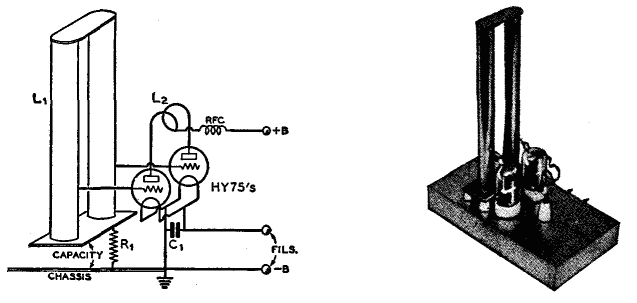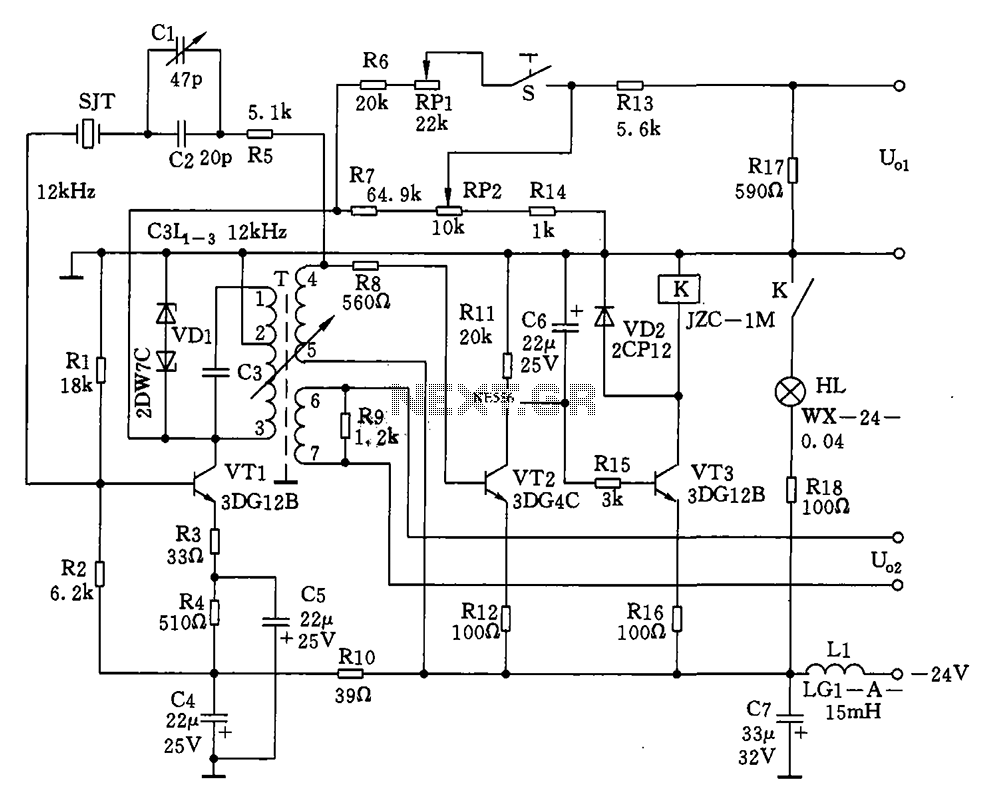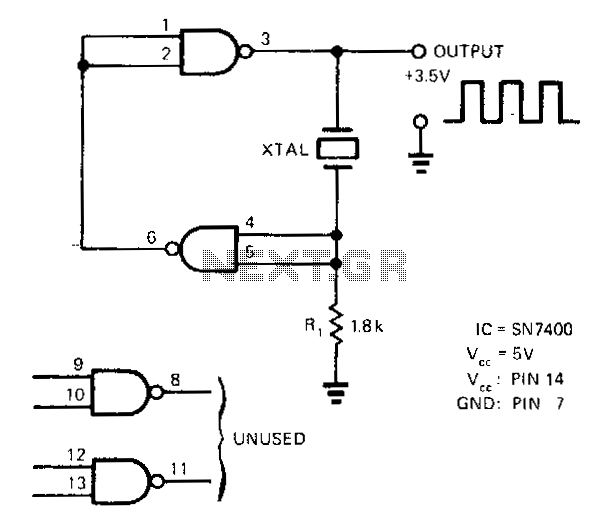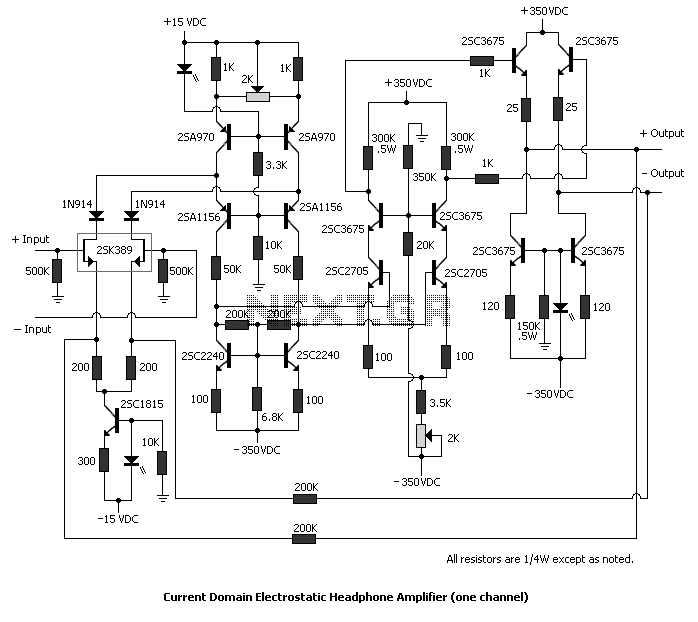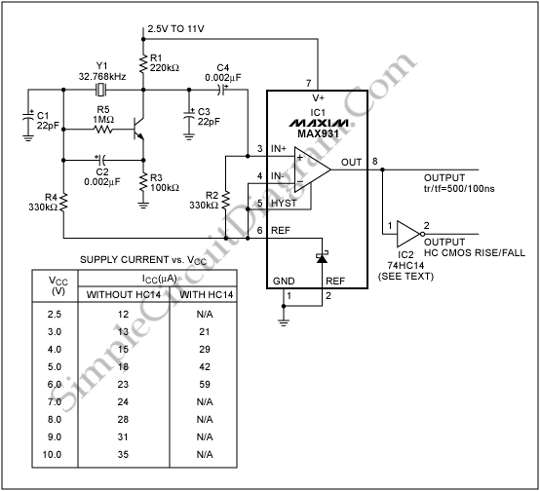
Jfet pierce crystal oscillator
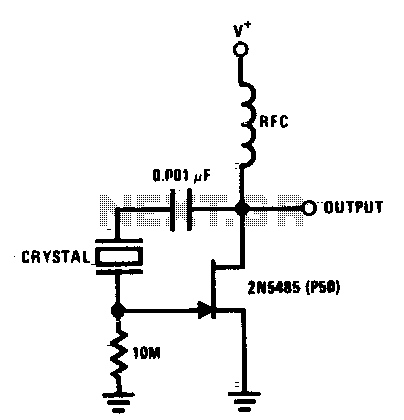
The JFET Pierce crystal oscillator accommodates a broad frequency range of crystals without requiring circuit modifications. The JFET gate does not load the crystal, which preserves a high quality factor (Q) and ensures excellent frequency stability.
The JFET Pierce oscillator is a popular circuit configuration utilized in various applications requiring stable frequency generation. The fundamental architecture consists of a JFET (Junction Field Effect Transistor) configured in a feedback loop with a crystal resonator. This arrangement allows the oscillator to harness the precise frequency characteristics of the crystal, while benefiting from the high input impedance of the JFET, which minimizes loading effects.
In this configuration, the crystal is connected between the JFET's drain and gate terminals, allowing it to oscillate at its fundamental frequency. The feedback provided by the circuit is critical in sustaining oscillation. The output is typically taken from the drain, which can be further processed or amplified depending on the application requirements.
One of the key advantages of using a JFET in the Pierce oscillator is its high input impedance, which ensures that the crystal operates at its optimal Q factor. This high Q factor is essential for maintaining frequency stability, particularly in applications where temperature variations or other environmental factors may affect performance. The Pierce oscillator is particularly suitable for low-power applications, such as RF transmitters, clock generation in microcontrollers, and signal processing circuits.
The design also allows for easy frequency adjustments by selecting different crystals, thus providing flexibility for various applications. Additionally, the circuit can be optimized for different performance parameters by adjusting component values, such as the drain resistor or the gate resistor, which can influence the gain and stability of the oscillator.
Overall, the JFET Pierce crystal oscillator is a versatile and efficient solution for generating stable frequencies across a wide range of applications.The JFET Pierce crystal oscillator allows a wide frequency range of crystals to be used without circuit modification Since the JFET gate does not load the crystal, good Q is maintained, thus insuring good frequency stability. 🔗 External reference
The JFET Pierce oscillator is a popular circuit configuration utilized in various applications requiring stable frequency generation. The fundamental architecture consists of a JFET (Junction Field Effect Transistor) configured in a feedback loop with a crystal resonator. This arrangement allows the oscillator to harness the precise frequency characteristics of the crystal, while benefiting from the high input impedance of the JFET, which minimizes loading effects.
In this configuration, the crystal is connected between the JFET's drain and gate terminals, allowing it to oscillate at its fundamental frequency. The feedback provided by the circuit is critical in sustaining oscillation. The output is typically taken from the drain, which can be further processed or amplified depending on the application requirements.
One of the key advantages of using a JFET in the Pierce oscillator is its high input impedance, which ensures that the crystal operates at its optimal Q factor. This high Q factor is essential for maintaining frequency stability, particularly in applications where temperature variations or other environmental factors may affect performance. The Pierce oscillator is particularly suitable for low-power applications, such as RF transmitters, clock generation in microcontrollers, and signal processing circuits.
The design also allows for easy frequency adjustments by selecting different crystals, thus providing flexibility for various applications. Additionally, the circuit can be optimized for different performance parameters by adjusting component values, such as the drain resistor or the gate resistor, which can influence the gain and stability of the oscillator.
Overall, the JFET Pierce crystal oscillator is a versatile and efficient solution for generating stable frequencies across a wide range of applications.The JFET Pierce crystal oscillator allows a wide frequency range of crystals to be used without circuit modification Since the JFET gate does not load the crystal, good Q is maintained, thus insuring good frequency stability. 🔗 External reference

